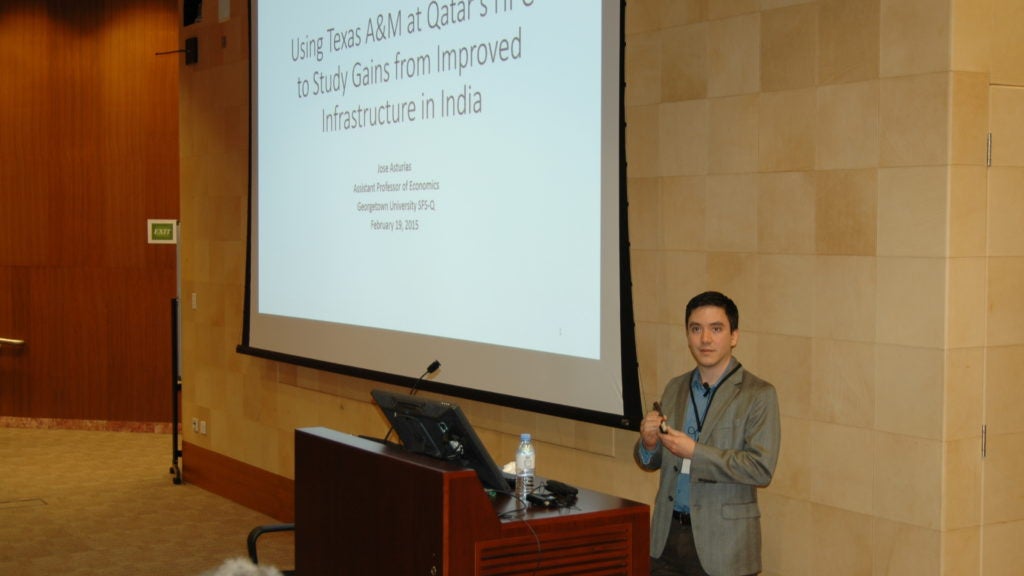Georgetown University faculty presentation on high performance computing infrastructure

Georgetown University SFS-Q, Assistant Professor of Economics, Jose Asturias, was one of the featured guest speakers invited to give a talk about their experiences with high performance computing infrastructure during the event marking the 10-year anniversary of High Performance Computing (HPC) at Texas A&M University at Qatar. Prof. Asturias held a presentation on his research findings highlighting the use of the HPC cluster for his project on the subject of gains from road infrastructure upgrades in India affecting internal trade. Working with Texas A&M at Qatar’s HPC on his study, prof. Asturias said that this was a great example of collaboration across universities in Education City,” the use of the Texas A&M at Qatar’s supercomputer was essential to the success of this project since it allowed us to simulate a model of internal trade in India, which is computationally intensive.” Calling the collaboration between Georgetown University in Qatar and Texas A&M at Qatar “a very productive relationship,” prof. Asturias explained that the supercomputing cluster was invaluable in completing the model due to the demanding memory and computational requirements needed to achieve a realistic model simulation.
Explaining his research findings, prof. Asturias noted that the model quantifies the gains from improving transportation infrastructure in India. “We used the case of the construction of the Golden Quadrilateral in India, which was a project in the early 2000s that aimed to upgrade the road infrastructure connecting the four major cities in India. We found that there are large aggregate gains and that the benefits to internal trade over a two year period exceed the initial construction cost,” he concluded.
Researchers have come to rely on cutting-edge computational tools and supercomputers to tackle increasingly complex challenges and to carry out more realistic simulations in computational science.